In this topic, you study Star Delta Starter – Working & Diagram.
This starter is essentially a two-way switch as shown in Fig. 1. In the starting position, it connects the Stator phases in Star. Therefore, voltage applied across each phase is only (i.e. 58
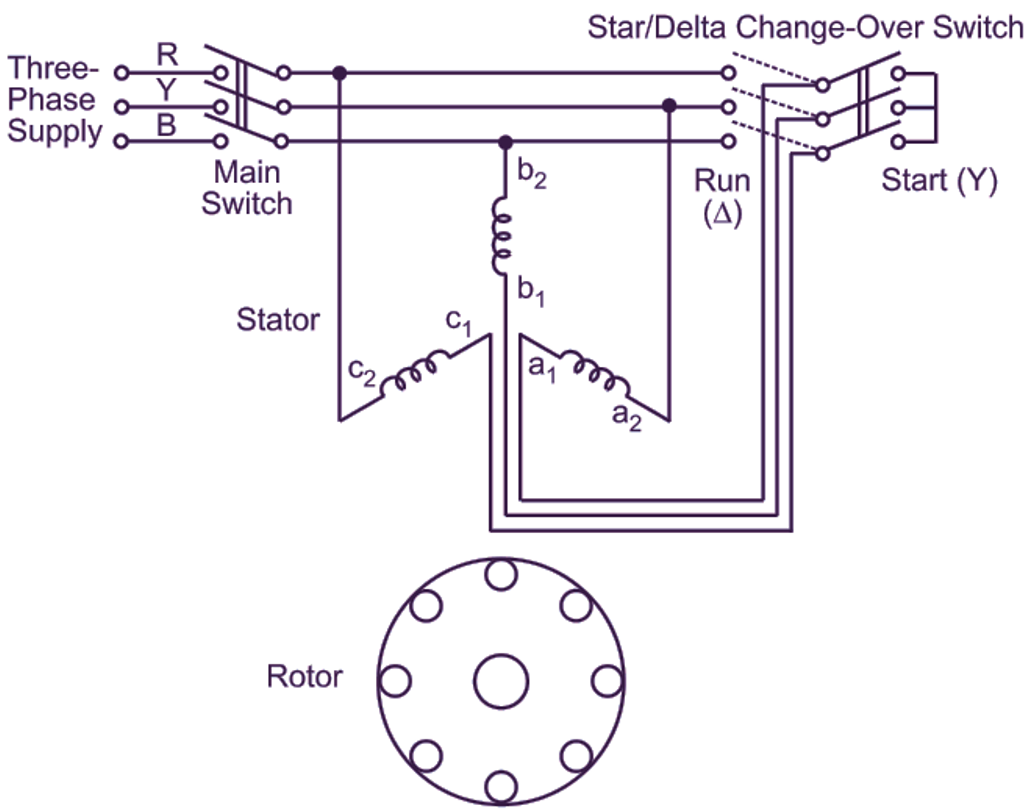
Fig. 1: Star delta starter
Obviously, this type of starter is useful only for that motor which is designed to run normally with delta connection. Moreover, all the six terminals Of the Stator phases must be available outside on the terminal board of such motor. Being efficient, simple and cheap, star-delta starters are more commonly used for starting the squirrel cage induction motors, particularly when the starting torque is not required to exceed about 50
Star Delta Starter Working Principle
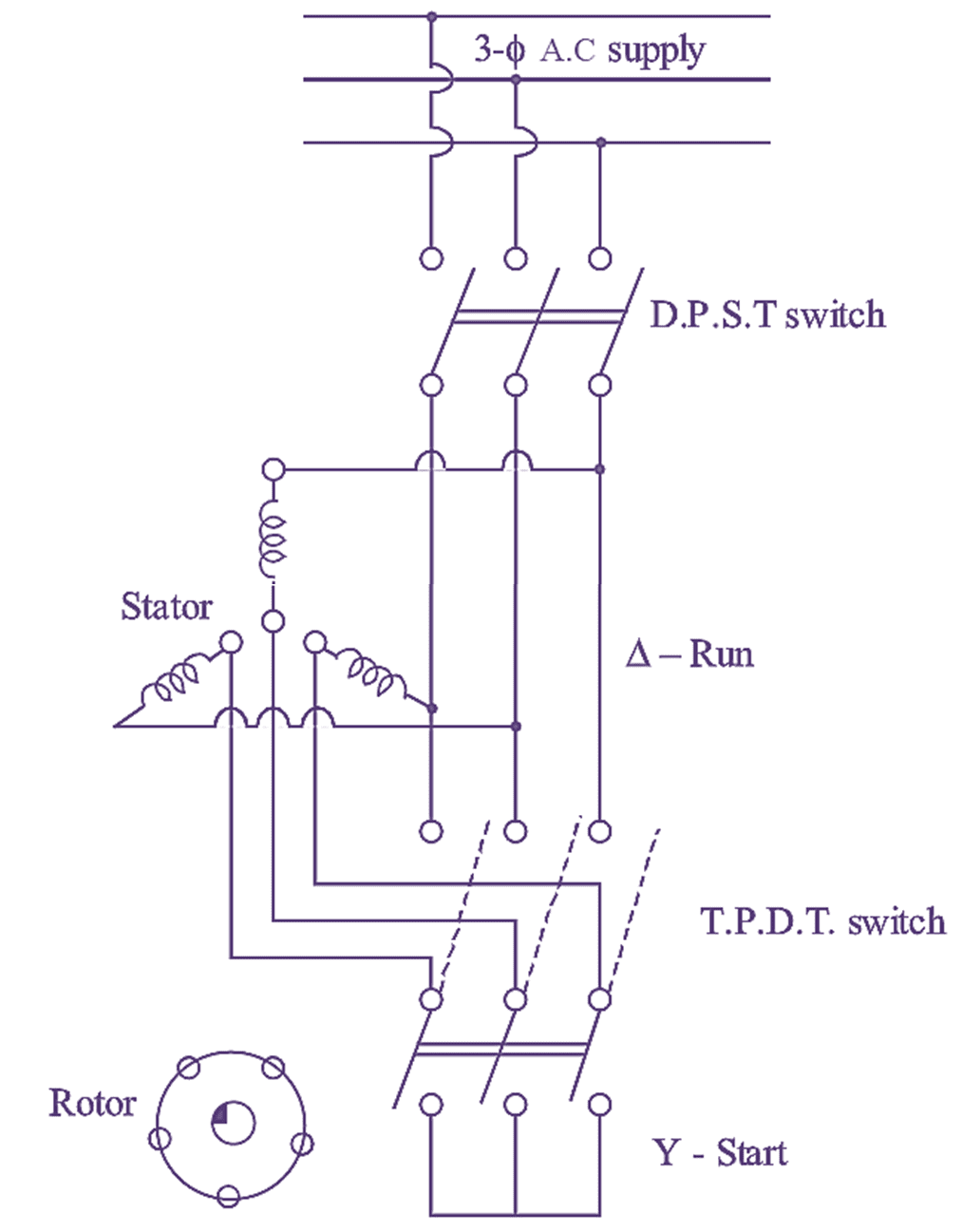
Fig. 2: Star delta starter wiring diagram.
The working of star-delta starter is based on the principle that the winding connected in star will have the voltage of 57.7
This method is employed in motors which are built to run normally with a delta connected stator winding. These types of starters are used for starting 3-phase squirrel-cage induction motors of rating ranging between 4 kW and 15 kW. The wiring diagram of star-delta starter is shown in figure (2). Star-delta starter consists of a two-way switch, which connects the motor in star for staffing and then in delta for normal running. When connected in star, the applied voltage over each motor phase decreases by a factor of \(\frac{1}{\sqrt{3}}\) and hence the torque developed equals \(\frac{1}{3}\) of the torque developed when the motor was directly connected in delta, whereas, the line current decreases to \(\frac{1}{3}\).
Hence during starting period, when motor is connected in star it takes \(\frac{1}{3}\) of starting current and develops \(\frac{1}{3}\) of the torque as that would have been developed when it is directly connected in delta.
Star Delta Starter Starting Torque in terms of Full Load Torque
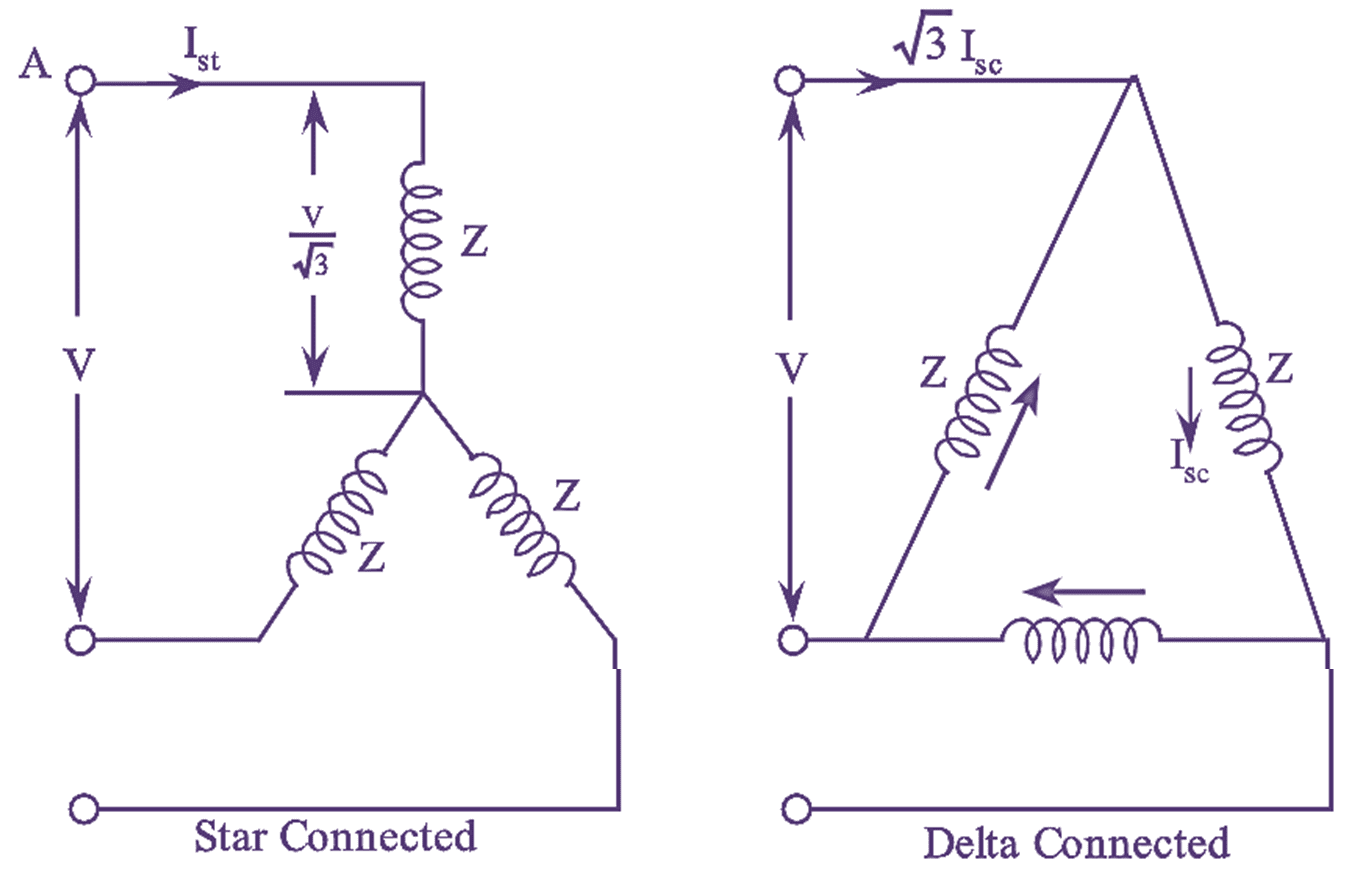
This method is used in the case of motors which are built to run normally with a delta connection.
\[\frac{{{I}_{st}}}{Ph}=\frac{{{I}_{st}}}{Line}=\frac{V}{\sqrt{3}Z}\]
\[\frac{{{I}_{sc}}}{Ph}=\frac{V}{Z}\]
And
\[\frac{{{I}_{st}}}{Line}=\frac{\sqrt{3}Z}{V}\]
Let the line voltage be ‘V’. The starting current Ist when the stator winding is connected in star is given by,
\[{{I}_{st}}(Y)=\frac{V}{\sqrt{3}{{Z}_{sc}}}\]
When the stator winding is A-connected then the starting current with direct switching will be equal to short circuit current and is given by,
\[{{I}_{st}}(\Delta )=\frac{V}{{{Z}_{sc}}}={{I}_{sc}}(\Delta )\]
Starting line current with direct switching is given as,
\[=\sqrt{3}\frac{{{V}_{L}}}{{{Z}_{sc}}}=\sqrt{3}{{I}_{st}}(\Delta )=\sqrt{3}{{I}_{sc}}(\Delta )\]
Also
\[{{I}_{st}}(Y)=\frac{1}{\sqrt{3}}{{I}_{st}}(\Delta )\]
Starting line current with direct switching in delta is given as,
\[=\frac{{{1}_{st}}(Y)}{\sqrt{3{{I}_{st}}(\Delta )}}=\frac{\frac{1}{\sqrt{3}}.\frac{{{V}_{L}}}{{{Z}_{sc}}}}{\sqrt{3}.\frac{{{V}_{L}}}{{{Z}_{sc}}}}=\frac{1}{3}\]
Now,
\[\frac{Starting\text{ }torque\text{ }star,\text{ }{{T}_{st}}}{Full\text{ }load\text{ }torque\text{ }delta\text{ }connected,\text{ }{{T}_{fl}}(\Delta )}\]
\[=\frac{\frac{1}{{{\omega }_{s}}}{{({{I}_{st}}(Y))}^{2}}.\frac{{{r}_{2}}}{{{s}_{st}}}}{\frac{1}{{{\omega }_{s}}}{{({{I}_{fl}}(\Delta ))}^{2}}.\frac{{{r}_{2}}}{{{s}_{fl}}}}\]
\[\frac{{{T}_{st}}}{{{T}_{fl}}(\Delta )}=\frac{{{\left[ \frac{1}{\sqrt{3}}{{I}_{st}}(\Delta ) \right]}^{2}}}{{{\left( {{I}_{fl}}(\Delta ) \right)}^{2}}}{{s}_{fl}}\text{ }\left\{ {{s}_{st}}=1 \right\}\]
\[\frac{{{T}_{st}}}{{{T}_{fl}}(\Delta )}=\frac{1}{3}{{\left( \frac{{{I}_{st}}(\Delta )}{{{I}_{fl}}(\Delta )} \right)}^{2}}{{s}_{fl}}\]
\[ {{T}_{st}}=\frac{{{T}_{fl}}(\Delta )}{3}{{\left( \frac{{{I}_{st}}(\Delta )}{{{I}_{fl}}(\Delta )} \right)}^{2}}{{s}_{fl}}\]
Applications of Star Delta Starter
- Used in low or medium voltage and light starting torque motors.
- They are also used in HVAC, mining, waste water treatment etc.
Summary of Star Delta Starter
1. The starting current of star-Δ starter is \(\frac{1}{\sqrt{3}}\) times less than that produced by DOL starter i.e.
\[\frac{1}{\sqrt{3}}{{I}_{sc}}\]
2. The starting torque of the star-delta starter is reduced to one-third of the starting torque produced by DOL starter i.e.,
\[\frac{{{T}_{st}}}{{{T}_{fl}}}=\frac{1}{3}{{\left( \frac{{{I}_{st}}}{{{I}_{fl}}} \right)}^{2}}{{s}_{fl}}.\]
3. It is suitable for high inertia and long acceleration loads and is simple to operate.
4. It is cheap, and very efficient when compared to autotransformer starter.
Control Circuit (Wiring Diagram) of Star Delta Starter using Relays
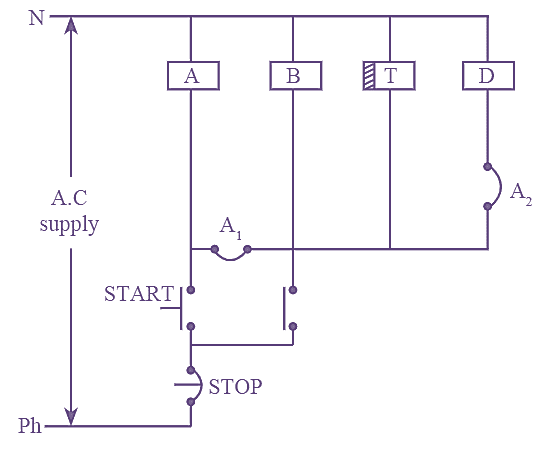
Fig. 3: Control Circuit of Star delta Starter.
One of the most commonly used methods to start an A.C motor is to start the motor in star connection. When the motor speed is sufficient, the connection changes to delta. To switch between star and delta relay, a timer is used. The control circuit of star-delta starter is shown in figure (3).
Initially, the coil A is energized by closing the main contacts and auxiliary contacts when the start button is switched ON by forming a star connection. The auxiliary contact Al opens and the circuit energizes the coil B and gives 3-phase supply to the contractor ‘A’ occurs and auxiliary contact A2 gets energized and tends the motor to run in delta-connection. In star-delta starter, START push button, STOP push button and NC contact of relay act as inputs and star contactor coil (A), main contactor coil (B), delta contactor coil (D) and timer ON delay acts as output. The ladder diagram of star-delta starter is shown in figure (4).
Let,
START push button — Input I
STOP push button ⸺ Input 2
NC contact of OLR — Input 3
Star contactor coil (A) — Output I
Main contactor coil (B) ⸺ Output 2
Delta contactor coil (D) — Output 3
Timer ON delay – T4 : 0
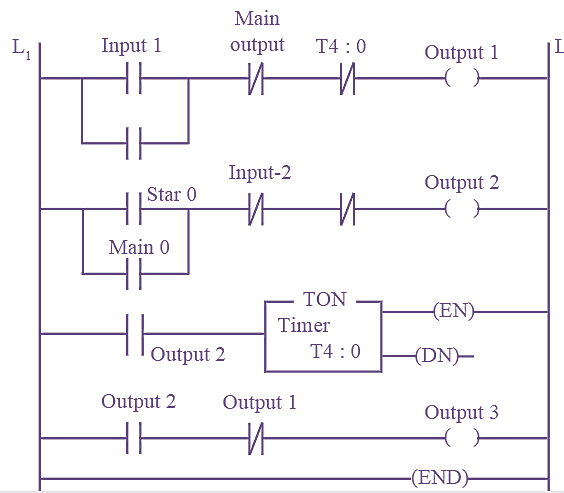
Fig. 4: Ladder logic Diagram of Star delta Starter.